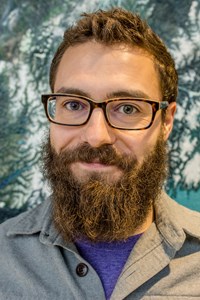Center for Safety Equity in Transportation
rural • isolated • tribal • indigenous
CSET Project #: 1809
Project Funding: CSET and Newtok Village Council
Start Date: July 2018
End Date: July 2024
Nathan Belz

Dr. Belz is an Assistant Professor in Civil Engineering, specifically Transportation Engineering, at UAF. He is also the faculty advisor for the UAF Green Bikes program, faculty member of the Master Planning Committee, and serves on the FNSB Public Transportation and FMATS Bicycle and Pedestrian Advisory Committees. Dr. Belz’s research and expertise primarily surrounds the transportation needs of rural communities including safety data analysis and non-traditional forms of transportation and has a background in driver behavior, human factors, and GIS applications in transportation.
Billy Connor

Billy G. Connor, PE, retired from the Alaska DOT&PF after 30 years of service. He spent twenty years in AKDOT&PF’s research branch as a research engineer, ten of these as the Chief of Research for the department. His work covered a wide range of transportation activities including developing Alaska’s pavement design procedures, pavement management, maintenance and forensic engineering, permafrost, frost heave and thaw weakening research, hydraulic research including fish passage, rip rap design and development of Alaska’s Hydraulic Manual, and numerous other transportation related activities.
Mr. Connor regularly provides training to transportation professionals in project management, permafrost design and construction, roadway design, construction and management. He also provides training to rural Alaska village administrators in dust management techniques and road maintenance. He is also working with the Alaska DOT&PF to improve its workforce development program.
Over the last 12 years Mr Connor has been the director of the Alaska University Transportation Center. During that time he was the director of a National University Transportation Center. He has continued to perform research in dust management of gravel roads and airfields, permafrost research, construction management, development of a Maintenance Decision Support System for the Alaska Department of Transportation, the use of geosynthetics, development of stabilization of sands and fine grained soils and other diverse research projects.
Newtok is a small community of 453 residents located on the Ningliq River along the western coast of Alaska. Newtok is experiencing similar problems to that of more publicized Shishmaref, AK where houses are falling into a shifting and eroding landscape. Newtok is immediately threatened by melting permafrost and coastal erosion due to fall storms, causing the Ningliq River and adjacent slough to widen and migrate in the direction of the community. The village is currently undergoing the process of planning a nine-mile move to Mertarvik, a new location on nearby Nelson Island, formed primarily by an old lava flow offering more stable ground.
In the near future, they are likely to be many more “Newtoks” across Alaska, and perhaps the rest of the United States. The Newtok project is anticipated to be a first step in helping very rural and isolated communities develop standards for safe roads that meet their unique travel needs. The knowledge gained during this endeavor will be invaluable when similar projects arise in the future. Even for the most seasoned engineer, Newtok represents one of very few occasions where the road and town layouts are being done completely from scratch and, perhaps, the first time a community will be transitioning so rapidly from boardwalk to a formal and conventional road system. Newtok offers an unbiased look at what a village should look like and the potential to, if done properly, instill the use of active modes of transportation from the beginning through supportive environments using a context and culturally sensitive approach. Community and road construction has started and will continue through summer/fall of 2018 and likely carry on into the following construction season.